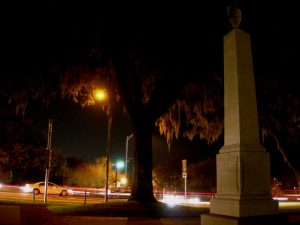It seems like an impossible notion:
A full year in Fort Lauderdale with no one killed while crossing the street or riding a bicycle or driving a car. It seems like such a distant reality from the one we are in, where this city is No. 2 in the nation for its pedestrian fatality rate and No. 5 in the nation for its overall traffic fatality rate.
Still, it’s a dream the city’s transportation manager Debbie Griner insists is achievable. Griner recently told The Sun-Sentinel that their offices are committed to changing the perception that such incidents are simply “accidents,” facts of life over which people have no control. Rather, she says, these are incidents that can be avoided. Every single person who lives, works or visits this area has an opportunity to prevent traffic deaths, and Griner believes city leaders can empower them to do so.
The strategy involves:
- Redesigning and constructing “Complete Streets” that are safer and easier for all users;
- Ensuring and pedestrians are 0beying all applicable traffic laws;
- Enforcing strict penalties for traffic violations by motor vehicle operators.
All of this, Griner said, will over time, “Add up to zero.”
Fort Lauderdale is the first city in Florida to sign onto the Vision Zero plan, which was birthed in Sweden and has been implemented in New York City, Boston, San Franciso and and San Antonio. Dozens of others are considering it. So far, however, none in the Southeastern U.S. have done so – until now.
Last year in Florida, 133 bicyclists were killed, according to the National Highway Traffic Safety Administration (NHTSA). That was the second-highest number of fatalities in the nation (behind California) and the highest rate once you factor in population.
As far as pedestrians go, the NHTSA reports 4,735 were killed and 66,000 injured nationally just in 2013 alone. Of those deaths, 501 were in Florida, and accounted for 45 percent of the state’s overall traffic deaths.
In terms of overall traffic deaths, there were 2,407 in 2013. Our fatality rate per 100 million vehicle miles traveled is 1.25, higher than the national rate of 1.09, according to the federal agency.
The director of the Broward Metropolitan Planning Organization, which is partnering with the city on this, says the danger on local roads is worsening, particularly with the proliferation of smart phones in recent years. Drivers and pedestrians especially are consumed by those glowing screens, and it leads to tragedy when it occurs behind the wheel or when crossing a busy street.
The MPO has indicated its office and city staff will collaborate on a five-year plan to help study progress made on the initiative.
Educational and outreach efforts are already underway, including distribution of materials to pedestrians about safe street crossing.
In April, local law enforcement intends to increase its efforts to identify traffic law violators and will be giving out warnings all month. The following month, the city plans to drive home the point by issuing tickets to violators.
There is also a call to action for lasting physical change by redesigning roads, encouraging reduced traffic speed and adding and/or widening bicycle lanes and crosswalks.
Those backing the Vision Zero plan say that while it’s human to err, the city can design streets that are more forgiving of those mistakes, so in turn it’s less dangerous for the rest of us.
Call Fort Lauderdale Injury Attorney Richard Ansara at (954) 761-4011. Serving Broward, Miami-Dade and Palm Beach counties.
Additional Resources:
Fort Lauderdale embraces new vision: No deaths on the road, Dec. 27, 2015, By Larry Barszewski, Sun Sentinel
More Blog Entries:
Bicycle Accident Questions Posed on Driver Safety Tests, Jan. 3, 2015, Fort Lauderdale Bicycle Accident Lawyer Blog
